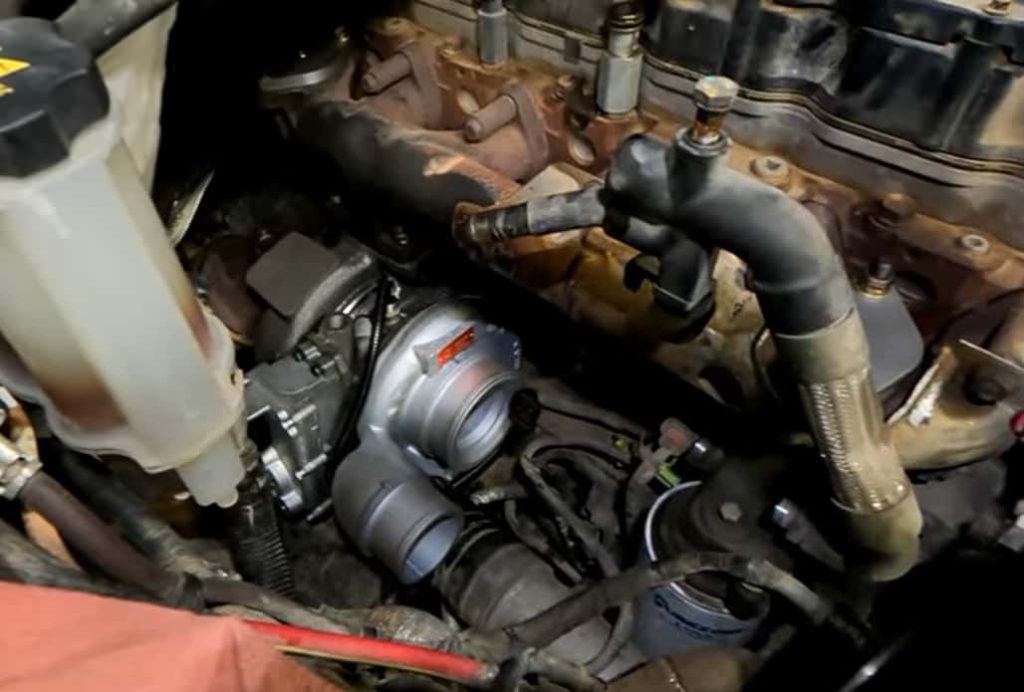You may have been noticing some signs of 6.7 Cummins turbo actuator fuse problems.
Perhaps recently, your truck is having a much lower boost than usual, or you are noticing some actuator failure codes. If so, then your vehicle may be at risk of some actuator fuse issues.
With that being said, it helps to identify what these symptoms are and take the right action that will help you address the problem before things get worse. Moreover, there may be bigger issues happening that can lead to a more expensive repair.
Keep reading to have a better understanding of what these common signs of actuator fuse problems are and what to do about them. Here we go.

Contents
Signs Of 6.7 Cummins Turbo Actuator Fuse Problems
The first place to start is by connecting your actuator to the computer while making sure it is not connected to your turbocharger. Then, you can begin testing. Check for some signs of electrical faults including a low boost, over boost, sector gear tends to move easily, noise originating from your turbocharger, and some fault codes.
It is important that the sector gear is able to move freely on the turbocharger. Otherwise, it means you need to get the turbo and possibly your actuator replaced.
In the case of a mechanical problem, here are some common symptoms to take note of: stuck vanes, bent turbo fins, EGR valve issues, failed thrust, carbon build up, EGR cooler problems, rusty or contaminated actuator, and coolant contamination.
Reasons For Actuator Fuse Issues
There are many reasons why your actuator may be failing. Here they are:
1. Gearbox Problem
Your gearbox is responsible for obtaining power from your engine and then creating more power with less speed or less power with more speed. When the gearbox starts having issues, this can impact your actuator.
2. Water ingress
What this means is that moisture or water gets into your engine compartment. Since your actuator is located in an area with an increased risk of water damage, this can cause the component to rust. Other damages may occur, which leads to your actuator giving poor or faulty signals, and ultimately, a complete failure. There may also be constant vibration from your engine, which can lead to actuator damage and failure.
3. Electric circuitry issues
Your actuator’s electric board is also likely to have some problems, which lead to malfunctions. For instance, the wire connectors tend to expand throughout their lifespan, and this may lead to damage and breakage. Furthermore, a spike in voltages due to power surges can cause serious problems to your actuator.
4. Turbo damage
There are times when your turbo connector may break loose. When this happens, you will have to replace your actuator.
Power loss may also arise because of sticky vanes or when you have carbon buildup, as well as stripped gears. Thus, you will notice a pronounced reduction in your truck’s performance. As a result, your vehicle may go into limp mode as it can no longer give the power required to generate torque.
5. Compromised actuator seals
Leaks tend to affect your actuator’s proper operation and performance. When there are leaks, your vehicle may experience rough idles, in addition to the check engine light illuminating. Thus, you will need to replace your damaged seals and gaskets. The same holds true with your bearings, which can also get worn over time. Change the faulty bearings to solve this problem.
6. Overheating
When your engine is not capable of cooling, the high temperature can impact the turbocharger. Overheating issues are often attributed to a coolant leak or a faulty radiator. Hence, you need to check the cooling system and the radiator, and make sure that there are no leaks in these areas. You should also inspect the engine’s oil level, which is important in making sure that all of the parts are lubricated properly.
7. Contaminated oil
When the oil that flows into your turbocharger is contaminated, this may cause your actuator to fail. This is why it is important to change not only your oil but also the filter. You will also need to flush the system with fresh, clean oil.
8. Boost leak
In the case of a boost leak, unmetered air may get into your turbocharger, which can lead to actuator failure. The only way to resolve this issue is by fixing leak problems in your boost system.
9. ECM errors
Lastly, your ECM controls the actuators. There are sensors that guide your ECM, which is why when there are defects to the sensors, incorrect signals are sent, aside from some issues to the actuator. But it is not always easy to fix the ECM since there are complicated electronics involving it.
You will have to either reset or recalibrate the ECM, but if this doesn’t fix the problem, you may have to replace it – especially if it is severely compromised. A replacement can be quite expensive but may be the only way to fix this issue.
What You Can Do
We mentioned earlier that some vehicles go into a limp mode as a means of self preservation when the actuator fails. This is why the vehicle slows down and some functions such as the AC stops to work. By going into limp mode, this means that you need to take your vehicle to a service center right away to get the issue diagnosed by a professional.
It is not to be ignored since you may end up getting stranded on the road, in addition to incurring more damages to your vehicle. Thus, it is best to have a professional take a look at your truck and have the problem diagnosed properly for the best solution possible. This will spare you from massive headaches and even costlier repairs that can cause longer downtimes.